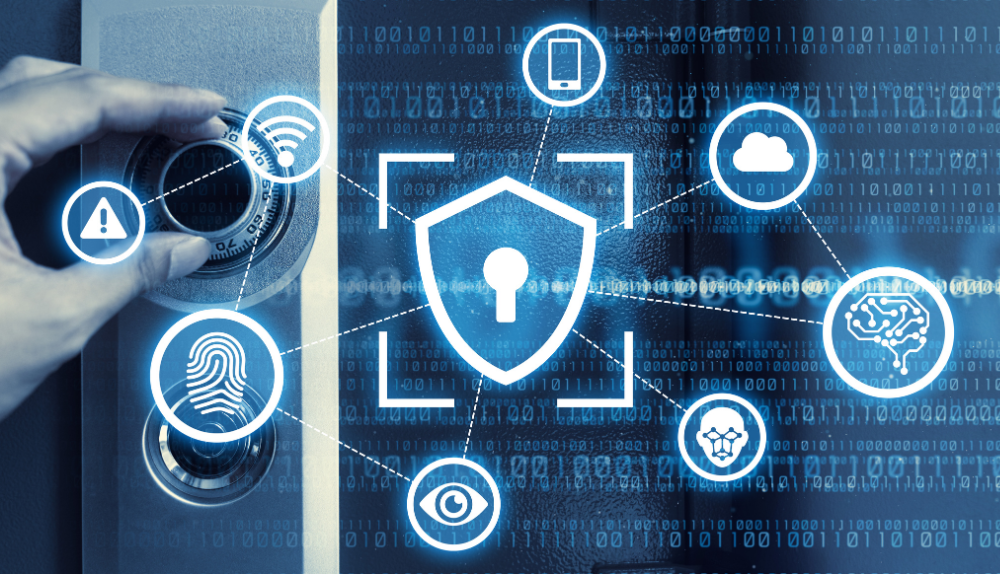
By max July 5, 2023
Data is the new cool in today’s world. Businesses rely on large chunks of data to accomplish their day-to-day tasks. Irrespective of the size of your business, you deal with tons of data every day, such as by collecting, storing, transmitting, or receiving information from multiple sources. We manage or process data via various devices, platforms, and technologies, and some of them include sensitive or confidential data, too.
This is where the role of securing or protecting your data comes into play. You must protect your data to avoid costly data breaches or cybersecurity attacks. Data security enables businesses to prevent the breach of confidential data and documents, such as business secrets, customers’ card details, and more. Today we will understand the difference between Tokenization vs Encryption and how they are helpful in protecting our data.
What is Data Security?
Data security is a set of practices or processes that help protect all your digital information from corruption, unauthorized access, theft, or leakage throughout its life cycle. While implementing robust data security strategies or approaches, you can protect your organization’s assets and sensitive data against insider threats, cyber-criminal attacks, and human errors.
Data security is a vast concept that encompasses every single aspect of information protection and security. Therefore, to cut to the point, we will restrict our discussion to database and file encryption solutions. These approaches and solutions act as defensive mechanisms to safeguard sensitive data by obscuring its contents through tokenization or encryption. Let’s discuss these data security terminologies.
What is Tokenization?
Tokenization is the process of placing sensitive information in a secure location external to the system where it was originally placed. The process replaces the confidential data with a non-sensitive equivalent, which is referred to as a token. Tokenization helps to protect data by substituting a non-sensitive placeholder for the actual data, as the token has no exploitable value or meaning.
Tokenization has its benefits. One can implement this process without changing the underlying data structure or format. In other words, the applications we use are not required to know that the information has been tokenized. It allows businesses to keep their sensitive data unaltered and intact, which is beneficial for compliance purposes.
How Does Tokenization Work?
An organization must replace sensitive info with a randomly generated non-sensitive value, called a “token”. No valuable data is revealed or leaked in the event of token vault hacks. Thieves and cybercriminals attempting the hack will have nothing other than the non-sensitive tokens.
One common use case for tokenization is online transactions, wherein it occurs millions of times per day. Every time a buyer makes a payment using a credit or debit card, the sensitive card information is tokenized and is privately retrieved instantly from the token vault to complete the transaction.
In the field of payment processing, tokenization is in widespread use. It’s because merchants find it easier to outsource this data security approach than to implement complex end-to-end encryption processes. Besides, tokenization enables businesses to remain compliant with entities, such as the PCI Security Standards Council, since the web crawler or other visitors won’t know that the website is using tokenization to secure data.
What is Encryption?

Encryption is the process of scrambling sensitive data that one must decrypt using a unique key to be read. In other words, it refers to transforming readable data into unreadable formats using a complex encryption algorithm and a key. Only someone having the key can decrypt the data.
Encryption is the best solution to protect sensitive information from being accessible to unauthorized individuals. Data encryption is widely used across the internet to protect all kinds of sensitive data, ranging from email and social media passwords to Netflix login credentials.
In some cases, visitors don’t even realize that a particular website they are browsing is using encryption. Websites and applications handling online transactions use data encryption to protect sensitive data, such as customers’ credit card information, address, contact details, etc., thus preventing cybercriminal attacks.
How Does Encryption Work?
The implementation of data encryption is more complex than it seems. There are a host of methods to manage sensitive data to help cryptographers defeat hackers in an arms race between those preserving data security and those aiming to hack it.
In data encryption, data gets converted to ciphertext through a complex mathematical encryption algorithm. An early example of data encryption is the Data Encryption Standard, although it is unsuitable for use in today’s fast-paced data-driven world due to its 56-bit key length. The Advanced Encryption Standard, which supports stronger key lengths, later superseded the earlier version.
Two Common Types of Data Encryption

Symmetric Encryption
The most common approach is symmetric encryption, wherein a single encryption key can encrypt and decrypt the information. Symmetric encryption is more commonly used by eCommerce merchants having their own brand websites. This kind of encryption is beneficial in concealing the buyers’ credit card information during online transactions. You surely have noticed that lock symbol beside some website links on the URL section of your web browser. That means that the particular site has implemented encryption.
Asymmetric Encryption
Another approach is asymmetric encryption, in which the user requires a pair of keys to gain access to the encrypted data. One is the public key that can encrypt the information, and the other is the private key that can decrypt the data. Asymmetric encryption is the ideal choice for exchanging info over various media, such as email, which needs to be kept confidential.
In a real-life scenario, the private key holder shares the public key to enable someone who has access to the key to encrypt the data and send it. Next, the private key holder decrypts the info, provided they have the appropriate key. In other words, if the person attempting to intercept data does not have the corresponding private key, they cannot decrypt it.
Differences Between Tokenization Vs Encryption

Both processes work with a similar concept – replacing sensitive data with a non-sensitive placeholder to hide the original info. Here are some significant differences between the two data security processes.
Tokenization:
- Retrieves data through token matching: One can retrieve sensitive data only from its “vault” when the user presents the correct token. The token, in turn, is retrieved from its dedicated vault when the user makes an authorized request. This method is commonly used in combination with encryption. So, when one retrieves sensitive data during a transaction, the middleman won’t be able to see it.
- Replaces sensitive data with tokens: In tokenization, the sensitive info gets removed from the company’s internal systems and stored in a secure and hidden location outside the internal databases. Internal databases are often the target of hackers.
- Supports PCI DSS compliance: To accept payments online, businesses must protect the customers’ sensitive data. Website owners may implement end-to-end encryption features or outsource tokenization processes to a dedicated professional. It makes it easier for eCommerce merchants to accept transactions online to comply with PCI data security protocols.
- Minimizes data loss risks: Since sensitive data is stored outside the organization’s internal databases and only the tokens are stored internally, there are low chances of altering, tampering, or deleting the original data by bad actors. Such risks may be involved with stolen encrypted data.
Encryption:
- Obscures the data via cipher: The confidential data is encrypted as per the material ciphertext’s algorithms. This cipher output is indecipherable without the accurate key. But the original data is still there. So, if this key is stolen, the bad actors will own the data, but they cannot read it without the private key. If the thieves have this key too, they can decrypt and read the sensitive data.
- Allows access to confidential data via key: Encrypted information needs single or multiple keys for decryption. Individuals having the required key(s) can decrypt the mathematical ciphertext to which the sensitive data is encrypted. If hackers can retrieve the required keys and the encrypted data, they can gain complete access to the real data.
- You can use it for structured and unstructured data: Data encryption can protect both structured data, including credit cards, and unstructured data, like entire documents or files.
- Widespread uses and large-scale applications: Data encryption is versatile in real-life applications. One can use encryption for everything, starting from internet traffic to server databases. Most websites employ data encryption approaches. Besides, encryption enables businesses to scale easily. Therefore, it is ideal to be integrated with data security applications, like servers or large databases
Summing up, we get the following points:
- Encryption alone is not a safe and secure data-protecting solution.
- Tokenization makes PCI compliance more affordable and seamless.
- Encryption has lower PCI compliance requirements.
- Tokenization minimizes data theft risks.
- While encryption converts plaintext into ciphertext via encryption algorithms and keys, tokenization replaces confidential data with some randomly-generated token values.
- Exchanging data in tokenization becomes hard as it needs direct access to a token vault that maps token value.
- In data encryption, you can exchange data with a recipient to a third party who has the correct encryption key.
Final Words
To conclude, it depends on your business model, the unique requirements of your firm, and customer demands to determine the best data security approach for your organization. You can opt for encryption if you have large chunks of unstructured data and your website has lower compliance requirements. Otherwise, tokenization would be a better choice. You can talk to a data security professional to decide the best solution for your business.
